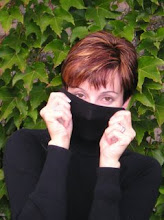December 20
 "The Nativity of Christ" , by Vladimir Borovikovsky, late 18th to early 19th century
"The Nativity of Christ" , by Vladimir Borovikovsky, late 18th to early 19th centuryIn The Bleak Midwinter
a poem by Christina Rossetti
set to music by Gustav Holst, and performed by the St Olaf Choir
also arranged by Harold Edwin Darke, and performed by
The Choir of King's College, Cambridge
In the bleak midwinterThe Choir of King's College, Cambridge
Frosty wind made moan,
Earth stood hard as iron,
Water like a stone;
Snow had fallen,
Snow on snow,
Snow on snow,
In the bleak midwinter,
Long ago.
Our God, heaven cannot hold him,
Nor earth sustain;
Heaven and earth shall flee away
When he comes to reign;
In the bleak midwinter
A stable place sufficed
The Lord God incarnate,
Jesus Christ.
Enough for him, whom Cherubim
Worship night and day
A breast full of milk
And a manger full of hay.
Enough for him, whom angels
Fall down before,
The ox and ass and camel
which adore.
Angels and archangels
May have gathered there,
Cherubim and seraphim
Thronged the air;
But his mother only,
In her maiden bliss,
Worshipped the Beloved
With a kiss.
What can I give him,
Poor as I am?
If I were a shepherd
I would bring a lamb,
If I were a wise man
I would do my part,
Yet what I can I give Him —
Give my heart.
"In the Bleak Midwinter" began as a poem by Christina Rossetti, written before 1872, in response to a request by the magazine "Subscriber's Monthly" for a Christmas submission. It was published posthumously in Rossetti's Poetic Works in 1904, and became a carol after it was set to music by Gustav Holst. It first appeared in The English Hymnal in 1906.
Another setting, written by Harold Edwin Darke, was performed in the early 20th century. The Darke version, with its beautiful and delicate organ accompaniment, gained popularity after the choir of King's College, Cambridge included it on its world-renowned radio broadcasts of The Festival of Nine Lessons and Carols. Mr. Darke was the conductor of the choir during World War II.
I have posted these two different settings of "In the Bleak Midwinter" here today. The King's College version is my favourite (though I admit to being rawther biased). I feel that Mr. Darke's descending melody line gives the carol an air of vulnerability, somehow... It makes the words feel more like a story, which suits the "child-like" last verse, especially. The second version, which is the Gustav Holst tune, is sung a capella by the St. Olaf Choir. It fascinates me, even though I prefer Mr. Darke's musical arrangement. I love the way the music of each stanza is set so differently: the choir varies the tempo and the volume of the piece with each successive verse, thus constantly changing the emotional element of the song. Most interestingly, though, they occasionally change KEYS at the beginning of some verses, which helps to emphasize the words and subject matter of the original poem. All of this, combined with wonderfully complex harmonies, makes for quite a remarkable performance.




























2 comments:
Thank you for this advent gift. I check your site every day, listen and sing along - loudly. In my schooldays, the choir leader scolded me for moving around too much while I sang.... that was years ago and now I'm free to move, smile, sing any way I like!!
Wonderful!!
I'm so pleased to hear that you are enjoying the music, and that you're joining in! Everyone CAN sing, SHOULD sing-- and if we were all more encouraged to do so, I think the world would be a much happier place, don't you?
Happy Christmas--
CGF xoxo
Post a Comment